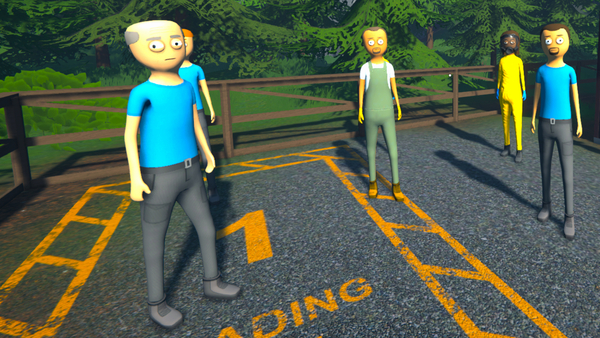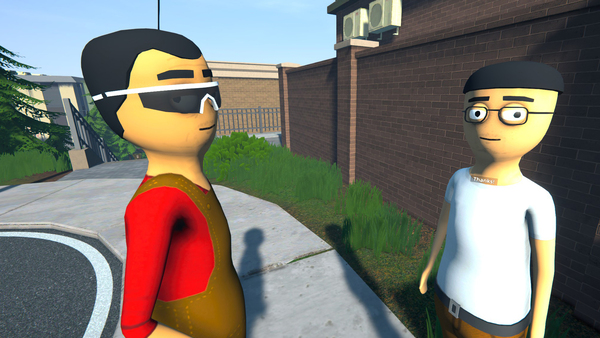Popular Now
Schedule 1 is a unique simulation and strategy game that challenges players to survive and succeed in a high-pressure environment by managing their daily schedule, mental health, physical well-being, and long-term goals. Unlike combat or open-world games, this one is all about choices, balance, and the ticking clock. Players must optimize every hour of the day to avoid burnout, hit deadlines, and maintain a life worth living. This guide will walk you through everything you need to know to master the game from the beginning all the way to the end.
Section 1: Understanding the Core Mechanics of Schedule 1
Before you begin optimizing, it's important to understand the basic gameplay structure. Schedule 1 operates around a 24-hour day planner where you assign tasks like sleeping, working, eating, or relaxing to specific hours.
Every activity you assign affects five core stats: energy, mood, focus, health, and stress. For example, working for long hours without breaks can raise stress and lower mood, while skipping meals impacts health. All these stats are interconnected, so one failing can trigger a chain reaction. Keeping a balance is not optional—it’s essential to surviving and progressing.
Section 2: Setting Your Priorities – Choosing Goals and Deadlines
At the beginning of the game, you must choose a life goal. Whether it’s finishing university, starting a company, or completing an art project, this goal determines your responsibilities and challenges.
Each goal comes with a series of deadlines and required skill development. For example, choosing to launch a startup will emphasize productivity and long work hours, while the academic path demands more studying and time management. Once selected, your calendar will be filled with task milestones you need to reach while still maintaining your mental and physical health.
Section 3: Creating a Balanced Daily Routine
The daily planner is the core of the game, and how you fill it determines your success. It’s critical to build a sustainable routine based on your character's natural energy cycle.
A sample schedule might look like this: wake up at 7 AM, work from 9 AM to noon, take a lunch break, work or study again in the afternoon, exercise or socialize in the early evening, then relax and sleep by 11 PM. This structure provides time for productivity, rest, and stress relief. But you must adjust based on how your stats respond each week—some weeks will require more rest or social time to keep from burning out.
Section 4: Managing Stress and Avoiding Burnout
Stress is the silent killer in Schedule 1. When it builds up, it causes your stats to drop and can lead to breakdowns or missed deadlines. Every character has a stress threshold, and exceeding it has major consequences.
You can reduce stress by scheduling breaks, going for walks, meditating, spending time with friends, or engaging in hobbies. If you start seeing warning signs like low mood or energy, immediately adjust your schedule to prioritize recovery. Ignoring stress leads to lost days or even hospitalization, which will severely impact your progress.
Section 5: Building Skills for Long-Term Growth
To succeed in your chosen goal, you’ll need to build specific skills over time. These include cognitive (like studying), creative (like music or coding), physical (like fitness), and emotional (like journaling or therapy).
Skill-building takes consistent time investment. The best strategy is to practice when your focus is high, such as early in the day. Reading books, attending workshops, or using apps in the game will help you improve faster. Better skills unlock new opportunities, make tasks easier, and contribute directly to achieving your end goal.
Section 6: Developing Relationships and Social Stability
Life in Schedule 1 isn’t just about productivity. Maintaining relationships is essential to long-term success and mental health. You’ll meet friends, mentors, and romantic partners who offer dialogue, support, and sometimes special perks.
Each person has different preferences and availability. You’ll need to make time for them weekly to keep the bond strong. Talking to a friend can boost mood and lower stress. Some storylines open unique scenes, gifts, or even collaborative tasks that improve your outcomes.
Section 7: Earning Money and Managing Resources
You’ll need money for food, rent, utilities, transportation, and even emergency situations. Most jobs pay by the hour or by project, so you must manage work hours carefully to avoid overexerting yourself.
Budgeting is an important mechanic. Track expenses weekly using the in-game app. Save for emergencies, but also consider investing in skill development tools like gym memberships or training courses. These may cost more upfront but yield long-term benefits that outweigh cosmetics or entertainment.
Section 8: Adapting to Random Events and Unforeseen Challenges
Schedule 1 is full of random events that can throw off your carefully crafted plans. You might get sick, lose power, forget a deadline, or have a bad emotional week.
These challenges make the game feel real and force you to adapt. To prepare, always leave at least an hour or two free in your daily plan. Maintain a stress cushion and try not to push your stats to their limits. Quick recovery is key. A flexible mindset and a well-balanced stat profile will help you bounce back quickly.
Section 9: Progressing to the Late Game and Building a Legacy
Once you've survived the first few in-game months and mastered basic survival, the late-game opens up. You’ll start legacy projects such as publishing a book, pitching a product, or organizing a big event. These projects often span weeks and require intense preparation.
To succeed, you’ll need high skill levels, strong mental health, and good relationships. These late-stage challenges determine your character’s ending, which can range from legendary success to quiet satisfaction—or total collapse if mismanaged.
Section 10: Optimization Strategies and Pro Tips
Though Schedule 1 doesn’t include traditional cheat codes, you can still maximize performance by exploiting smart strategies. Focus on time efficiency, mood optimization, and passive skill boosts.
Examples include combining physical and mental tasks (like jogging with a podcast), scheduling rest before big deadlines, or stacking social events on weekends to save time midweek. The key is to always plan ahead and check your weekly stat trends to avoid a crash. 
Conclusion:
Schedule 1 is one of the most realistic and rewarding simulation games you can play. It forces you to think critically about how you spend your time, care for your mental and physical health, and plan for long-term goals. Mastering it requires patience, self-awareness, and discipline—but the satisfaction of pulling off a perfect week or finally reaching your dream goal is unlike anything in typical games. Use this guide to navigate the pressures of the game’s world, and remember: success isn’t just about doing more, but about doing what matters most with the time you have.


















